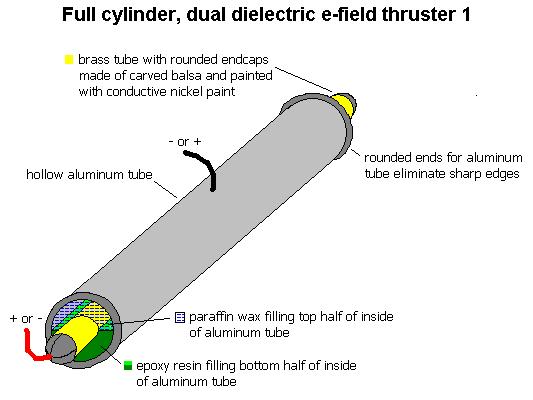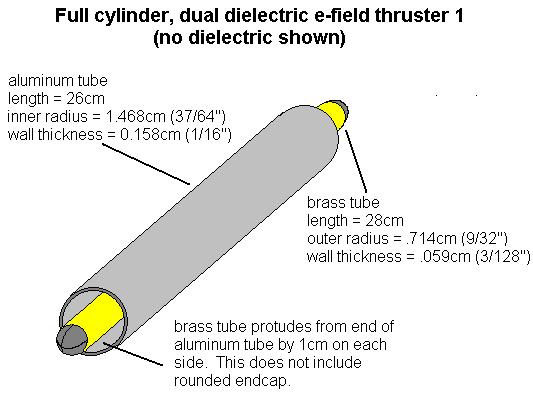This was a careful attempt at producing propulsion without use of the surrounding air as a reaction medium. It is basically a capacitor wherein two different solid dielectrics are used between and around the electrodes. The composition and arrangement of the dielectrics are such that an asynchronous e-field is created between the electrodes.
This is a "careful" attempt in that the dielectrics have been selected for their specific properties rather than being randomly selected. As well, the configuration of the electrodes and dielectrics have been carefully calculated and constructed.
Theoretical background, calculations, and much direction for the construction of this thruster were provided by Zoltan Losonc (Zoltan's website no longer exists. Some of it has been copied to this website with his permission. Links below are to these copied pages. Not all the links on those copied pages work.) The ingenious design is Zoltan's. Andi has also done work on a thruster of this type. Details of the computations that went into producing this thruster can be found at The expectation was that the cylindrical and spherical E-field thrusters would violate Newtons 3rd law (see Conclusion section below). A page giving similar background as well as some details of Andi's work can be found at The E-field thruster project. Zoltan's full page with other background calculations used to be found at http://www.gyogyitokezek.hu/fe/ but it no longer exists. Zoltan also built a device and details can be found here. A discussion group existed that supported this effort. It no longer exists but was called feprinciples (http://groups.yahoo.com/group/feprinciples/).
Conclusion
This device did not result in any thrust. The tests described below wherein the device was arcing at 8kV do indicate that there are problems in my construction in attaining higher voltages however there should still be a measureable thrust at 8kV.
The conclusion is that the reason the calculations predicted a resultant force was because they relied on standard physics for their calculations but there are errors in what standard physics predicts. For the details on these errors see the bottom of Zoltan's page detailing his attempt and conclusions.
Construction
|
|



